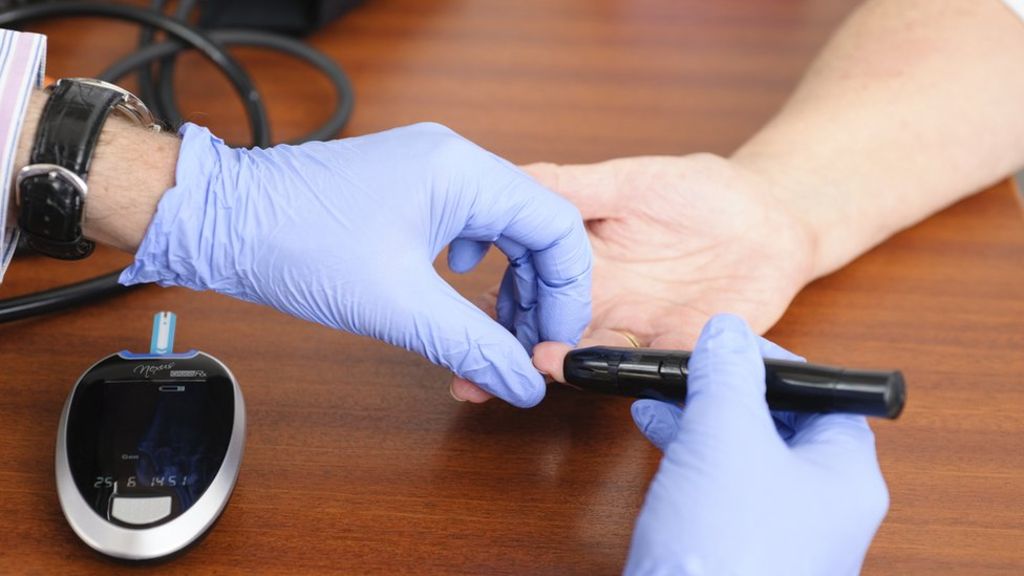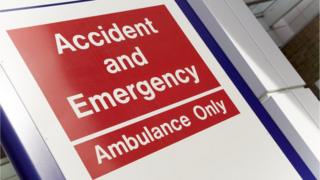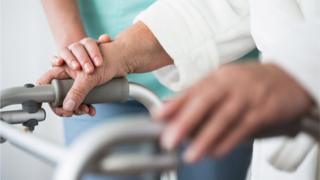NHS Health Check: Five examples of innovation in the UK – BBC News

 Image copyright SPL, Guy Hinks
Image copyright SPL, Guy Hinks Around the UK, trusts are coming up with innovative ways of relieving the pressure on the NHS and improving people’s health – in hospitals, in GP surgeries, in care homes and in accident and emergency units.

Diverting patients from A&E
In May last year, the A&E department at Queen’s Hospital, Romford, Essex, started a six-week trial to divert patients away from the department.
Patients that attended A&E would be seen as soon as they walked into the department by either a consultant or a GP.
“The doctors would review them, and if appropriate they would redirect them to a more appropriate setting,” says Sarah Tedford, chief operating officer at Barking, Havering and Redbridge University Hospitals NHS Trust.
“For a lot of patients that actually meant self care – so these were patients who, with the right reassurance, could actually manage the condition themselves.”
 Image copyright SPL
Image copyright SPL Alternatively, patients would be redirected to a pharmacist or to their GP so they could get an appointment for a later date.
The trial worked so well that it has been adopted full time.
They currently divert between 60 and 90 patients a day.
“Most of them can be seen and assessed within five minutes,” instead of potentially waiting for hours, Sarah Tedford says.
She says the staff and most patients have taken to it “very well” and they have have been asked to go and talk to other hospitals about it.
“It’s just really important to stress it’s about directing patients to the most appropriate setting rather than waiting in a busy emergency department where they don’t actually need to be,” she says.
“It’s about reassuring the public – it’s not turning away sick patients, that’s absolutely not what it’s about.”

Sending older patients home
In Glasgow, older patients have been helped to leave hospital thanks to a programme that opened 90 beds in private nursing homes.
Discharge policies were changed so that patients could leave hospital within 72 hours, and their long-term needs could be assessed outside hospital, rather than lying in a hospital bed.
The intermediate care programme, as it is called, was set up in 2014 by Glasgow City Council and NHS Greater Glasgow & Clyde.
David Williams, the chief officer for Glasgow City Health and Social Care Partnership, says they asked the care home providers to work with them to “look at re-enablement and rehabilitating” the people placed in the homes.
 Image copyright Guy Hinks
Image copyright Guy Hinks “We set targets to get 30% of people home that came into intermediate care beds, and we have achieved that consistently,” he says.
Beforehand, those people would probably have ended up going into residential nursing care for the rest of their days, he adds.
Now, moving patients out of hospital beds more quickly has helped the system to flow.
In 2015, Glasgow was the only part of the UK where A&E waiting times were actually better than they were 12 months before.
Last week, figures showed there were only 24 patients aged over 65 who had been delayed leaving hospital. That compares with 140 people in 2014.

 Image copyright Wirral University Teaching Hospital
Image copyright Wirral University Teaching Hospital Taking the hospital out into the community
In the Wirral, a community diabetes clinic is reaching patients who can’t travel or don’t want to come to hospital.
These are the people that Dr King Sun Leong, a consultant in diabetes, worries about.
He set up the clinic in November 2015, because he wanted to get access to patients earlier to try to stop type-2 diabetes from taking hold, which can lead to heart attacks, strokes and other health issues.
Working with a GP and a specialist nurse, Dr Leong monitors patients’ diets and lifestyle, talks to them about their work and their social life and how they lead their lives.
He also gives them advice and treatment with the aim of preventing future complications.
“If you’ve got a little hole in your roof, you want to stop it turning into a big hole,” Dr Leong says, explaining why it’s crucial to see patients early on in the community.
And they’ve had good results.
With two community diabetes clinics now in the Wirral, more nurses are being trained to deal with the care of type-2 diabetes and more people are being helped to avoid long-term health problems.

 Image copyright Thinkstock
Image copyright Thinkstock Using the power of art to heal
Patients visiting GPs in Rotherham are not just offered the normal array of drugs and treatment – they are given the option of exercise clubs, arts groups, metal work clubs and yoga.
The concept – known as social prescribing – is based on evidence that shows about a fifth of patients visiting GPs have a social rather than medical problem.
The scheme – run by Voluntary Action, a partnership of more than 20 organisations – was launched in 2012.
Now, every GP practice is using it and more than 2,000 patients have benefited.
GPs and social workers refer those who they believe would benefit to one of five social-prescribing workers.
They visit the patient in their home to carry out an assessment and work out what prescription to offer them.
It certainly seems to be working. An evaluation has found A&E visits have dropped by a fifth among those who have had a social prescription.

 Image copyright Thinkstock
Image copyright Thinkstock Getting the NHS to help care homes
The council and local NHS has started working together in the London borough of Sutton to keep care home residents well.
GPs have been employed to carry out regular visits of care homes, with each resident now receiving six-monthly check-ups.
A pharmacist is on hand to visit homes to carry out medicine reviews.
And district nurses have been used to train care home staff in dementia, falls and diabetes.
It certainly seems to be working.
Since the project started in 2015, there has been a 10% drop in visits to A&E.
But help is also on hand when care home residents need to go into hospital.
It’s a relatively simple concept.
When a care home resident needs to go into a hospital, a red bag is packed for them.
It contains their details, vital information about their health conditions, supplies of medicine, and even a change of clothes for when they are ready to be discharged – after cases where hospitals had to borrow clothes from lost property when patients had been ready for discharge.
The initiative also sees a member of the care home staff visiting the patient in hospital within 48 hours of admission.
And this all helps doctors and nurses treat them more effectively.
The result is older people are spending less time in hospital – eight days, which is four fewer than before the scheme was set up.

NHS Health Check

A week of coverage by BBC News examining the state of the NHS across the UK as it comes under intense pressure during its busiest time of the year.
- VIDEO: An ordinary hospital under extraordinary pressure
- GRAPHICS: 10 charts that show the NHS is in trouble
- INTERACTIVE: What’s for the chop where you live?
Read more: http://www.bbc.co.uk/news/health-38879439